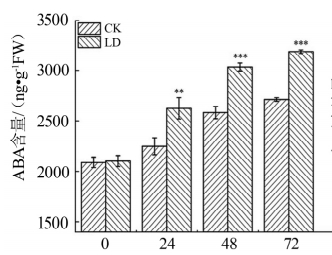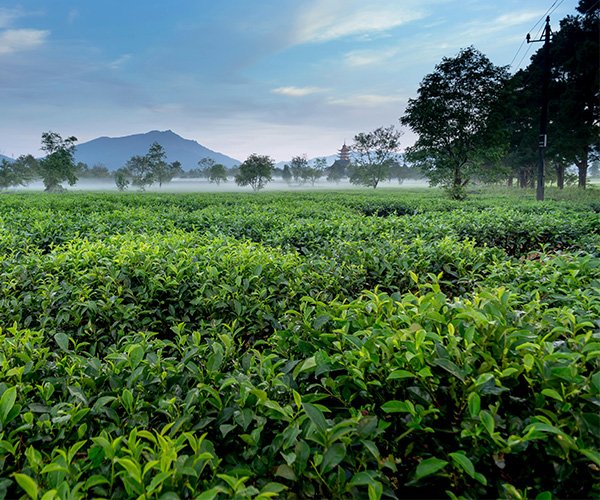Tea trees are moisture-loving plants with high water requirements during the growing season and are highly susceptible to drought stress. Alginate Oligosaccharide (AOS) is the depolymerization product of alginate and has the characteristics of low molecular weight, excellent solubility, high biological activity and non-toxicity.
Research shows that spraying Alginate Oligosaccharide (AOS) can induce tea trees to produce stress-resistant substances and improve the drought resistance of tea trees. It can be used as an effective plant growth stimulating substance in tea tree management.
(Wang Heng, Cao Jiayin, Hou Jian, et al. Effects of spraying fucoidan oligosaccharides on drought resistance of tea trees [J]. Shandong Agricultural Sciences, 2023, 55(12): 63-70. DOI: 10.14083/j.issn.1001- 4942.2023.12.009.)
1. Effects on ABA content and drought resistance-related gene expression in tea leaves
ABA (abscisic acid) accumulated rapidly in tea leaves under drought stress, and the accumulation amount in LD treatment after 24 h of stress was significantly higher than that in CK. Compared with stress at 0h, the ABA content in LD treatment increased by 51.46% at 72 h of stress, while that in CK increased by 29.83%.

During 24 to 72 hours of drought stress, the relative expression levels of catalase gene (CsCAT) and sucrose synthase gene (CsSUS4) were both down-regulated, but the relative expression levels of CsCAT and Cs-SUS4 in leaves treated with LD were significantly higher than those in CK.
2. Alginate Oligosaccharide effect on tea leaf tissue morphology
Under drought stress, the palisade tissue in the epidermal cells of tea plant leaves treated with Alginate Oligosaccharide (AOS) was more tightly arranged than that in CK, and the cells in the sponge tissue increased.

It shows that spraying fucoidan oligosaccharide changes the cell structure of the leaf epidermal tissue, which can reduce water loss in the leaves and alleviate the impact of drought stress on the leaves.
3. Effect of Alginate Oligosaccharide on water content and relative conductivity of tea leaves
After 24 h of drought stress, the water content of tea leaves decreased significantly compared with 0 h. At 48 h and 72 h, the water content of leaves treated with LD was 14.15% and 15.29% higher than that of CK, respectively.

With the prolongation of drought stress time, the relative conductivity of leaves increased to varying degrees, and the relative conductivity of leaves treated with LD was significantly lower than that of CK at 48 and 72 h. Compared with 0h, the relative conductivity of LD-treated leaves increased by 45.19% at 72 h, while CK increased by 119.27%.

It shows that spraying AOS can help alleviate the damage to leaves caused by drought stress. Thereby reduce leaf electrolyte extravasation.
Under drought stress, spraying Alginate Oligosaccharide (AOS) has below effections:
- Promote the tighter arrangement of palisade tissues in tea leaves;
- Increase the number of sponge tissue cells;
- Slow down the reduction of leaf water content;
- Significantly increase the expression of hormones, antioxidant enzymes, sugar and other related genes.
In summary, spraying Alginate Oligosaccharide can improve the drought resistance of tea trees and reduce the damage of tea trees caused by drought stress.


